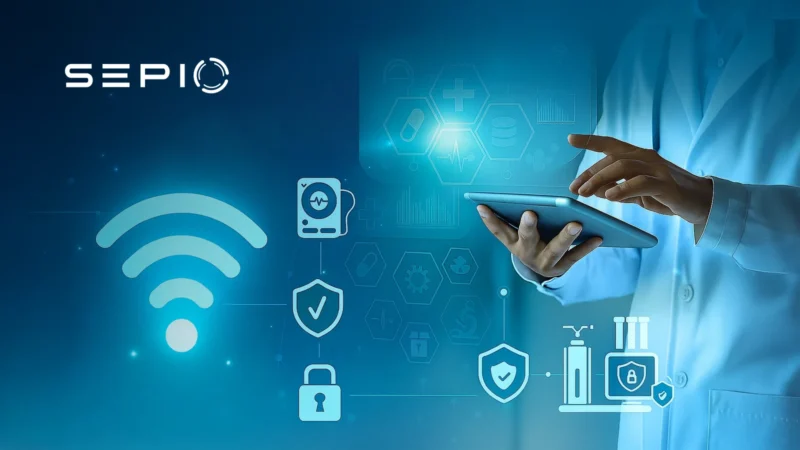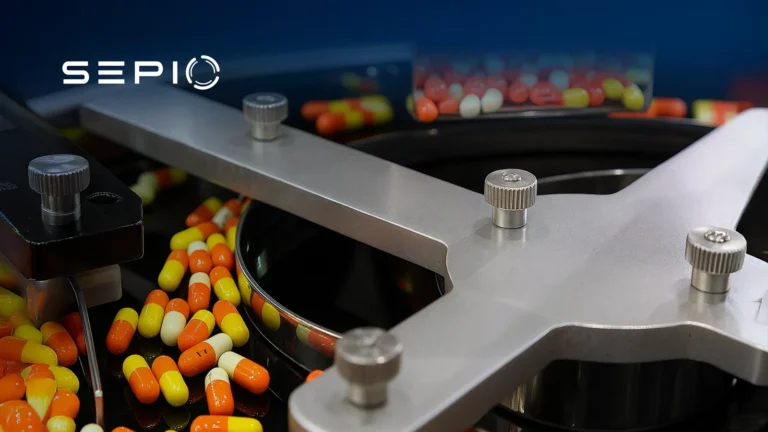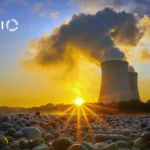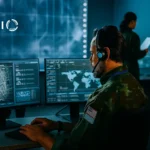What is IoT in Healthcare?
IoT in healthcare, also known as the Internet of Medical Things (IoMT), includes medical devices that connect to the internet. These devices collect and share health data in real time, helping doctors, nurses, and hospitals work faster, smarter, and more efficiently. From wearable monitors to connected infusion pumps, these devices streamline workflows, reduce human error, and support better patient outcomes.
However, the rise of connected healthcare IoT devices also introduces new IoT security challenges in healthcare. Without proper safeguards, devices can be vulnerable to cyberattacks, hardware manipulation, and data breaches. That’s why healthcare IoT security is essential: it protects patient data, ensures safe device operation, builds trust, and ensures compliance with healthcare regulations like HIPAA.
Benefits of IoT in Healthcare
IoT in healthcare makes healthcare faster, safer, and more effective. Some key benefits include:
- Improved Efficiency: IoT in healthcare devices can track the real time location of medical equipment and aid in infection control through hygiene monitoring.
- Improved Communication: Data flows between systems, helping patient care.
- Enhanced Monitoring: Wearable and bedside monitoring devices track vital signs such as blood pressure, heart rate, and glucose levels in real time, helping clinicians detect issues early.
- Remote Patient Care: IoT allows doctors to monitor patients outside the hospital, reducing readmissions and improving chronic disease management.
- Data-Driven Insights: Continuous device data enables predictive analytics, better resource allocation, and evidence-based decision-making.
Security Challenges for IoT in Healthcare
IoMT devices collect, store, and transmit sensitive patient data, including personal health information (PHI). As healthcare organizations increasingly rely on these devices for remote care and real-time monitoring, robust medical IoT security becomes critical.
While IoMT offers significant benefits, lower costs, improved patient care, and faster response times, it also introduces serious risks, including:
- Data breaches
- Hardware tampering or manipulation
- Patient privacy violations
Healthcare IoT security plays a critical role in protecting:
- Sensitive patient data
- Patient safety
- Device functionality and system integrity
By implementing strong security policies, healthcare providers can fully leverage IoT technologies without compromising trust or violating compliance requirements.
Healthcare IoT Security Risks
Even with the benefits, connected IoT devices in healthcare present risks. These Internet of Medical Things (IoMT) devices collect and share vast amounts of sensitive personal health information (PHI), which is often more valuable than other personal data (PII).
As the number of connected assets grows, so does the potential attack surface. Common vulnerabilities include a lack of encryption, outdated or legacy software, weak network controls, and insecure third party systems.
Despite these risks, many healthcare organizations fail to invest enough in security. Threats like malware and DDoS attacks remain a major concern.
To stay safe, healthcare providers must improve IoT in healthcare defenses, limit network access, and promote a security-first culture.
Security for IoT in Healthcare
To strengthen healthcare IoT security and secure sensitive patient data, organizations must take a prepared approach to security:
- Increase Awareness: Educate staff on IoMT security risks and potential threats such as malware and fake emails.
- Implement Robust Authentication: Enforce multi-factor authentication (MFA) and biometric security measures to prevent unauthorized access to patient data and IoT healthcare devices.
- Apply the Principle of Least Privilege: Limit access to necessary information to reduce exposure to sensitive data.
- Regular Updates & Patching: Keep device firmware and software up to date to close known vulnerabilities.
Additionally, patients should be encouraged to ask questions about how their health data is protected and what security measures exist.
Securing Internet-Connected Healthcare Devices
Healthcare IoT security depends on identifying and safeguarding all internet-connected medical devices. As the number of devices grows, this task becomes increasingly complex. Limited visibility into these assets raises the risk of exploitation and cyberattacks.
To counter these threats, healthcare organizations must implement cybersecurity solutions that provide real-time device monitoring, as well as hardware attack detection and mitigation.

Sepio enables organizations to gain complete visibility into all connected assets, including risks associated with IoT in healthcare. By leveraging Sepio’s advanced capabilities, healthcare providers can enhance IoT security in healthcare, proactively detect threats, and protect the integrity of critical patient systems.
Sepio’s Discovered Assets and IoT Security Solution
Sepio is the only company in the world that verifies physical-layer data. It provides unmatched visibility into all IoT devices within a network. By identifying, detecting, and managing every connected assets, Sepio ensures no IoT device is left unmanaged. This reduces security gaps and mitigates risks, increasing healthcare IoT security without relying on manual reports, out of date inventory records, or employee compliance to detect vulnerabilities. Sepio provides answers to questions such as:
- What devices are physically connected to the network?
- Are there any unauthorized or rogue devices present?
- Are all assets behaving as expected, or showing signs of malicious activity?
- Is the device inventory accurate and updated in real time?
- How many IoT devices do we have connected to our network?
- Who are the top 5 vendors for IoT devices found in our environment?
- Where are the most vulnerable switches in our network?
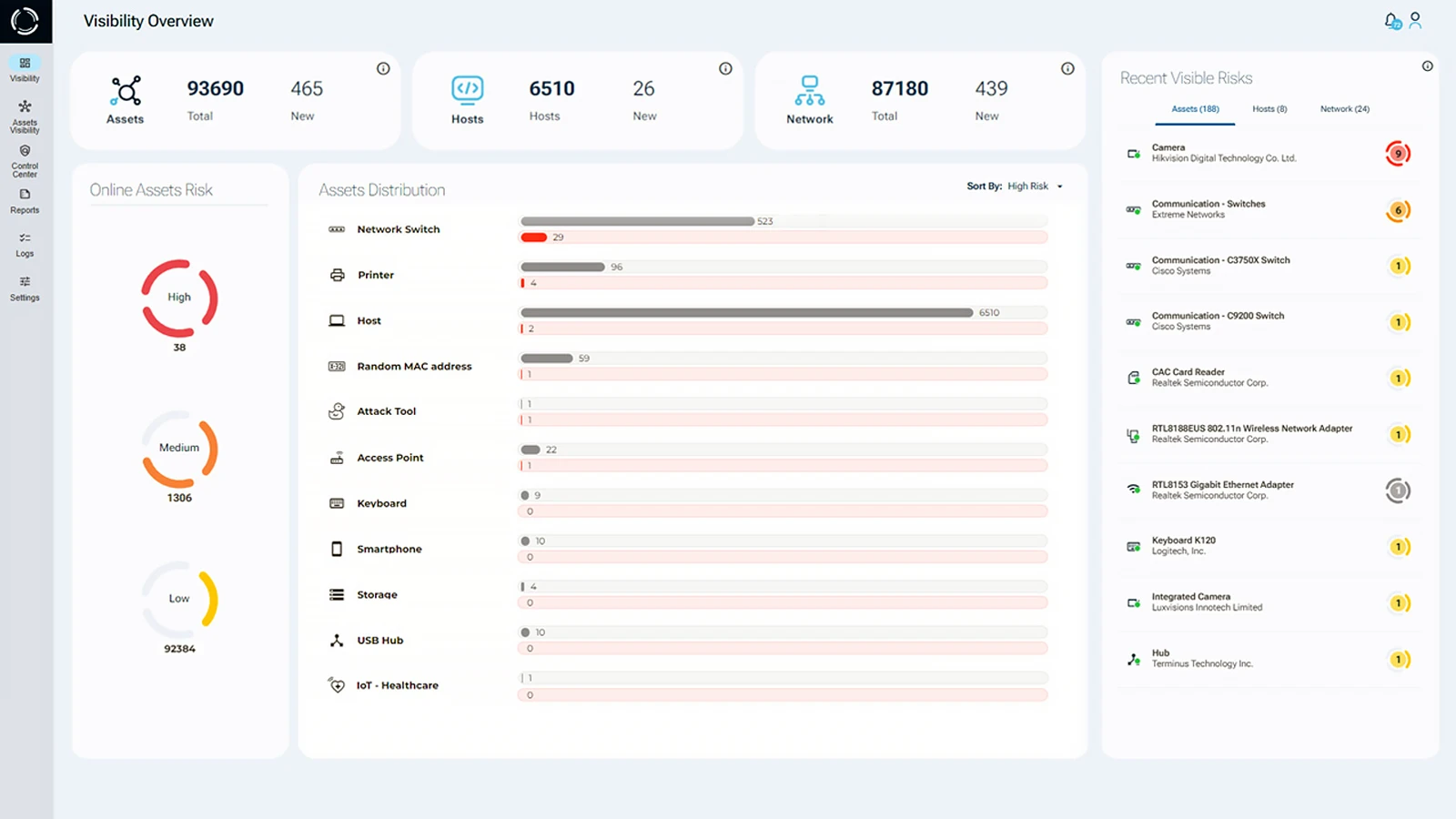
Schedule a Demo
Having full visibility into IoT and IT assets greatly strengthens a healthcare organization’s cybersecurity. With so much personal data already online, cybercriminals are constantly looking for ways in. But should they ever have access to private medical information? Absolutely not.
Schedule a demo today to see how Sepio’s asset risk management solution secures IoT in healthcare and protects patient data.
